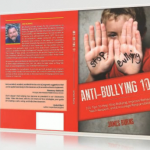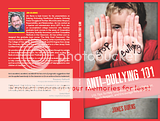Bullying Behavior Is Never Forgotten
I speak to teachers all over New Jersey, Pennsylvania, Maryland, and Virginia so I was thrilled when I got a call from my hometown school district, and they asked me to do a workshop for their teachers. Some of the teachers I had when I was a student were still there, and it was a lot of fun for me to be teaching them something. The topic that they asked me to speak about was “Student Behavior Management.” I started to talk about bullying which is a significant part of behavior management today, and what an impact this horrible behavior can have on the school climate, individual classrooms, students, teachers, and even the community where the students live. When I gave the group a break one of the teachers in the audience came up to me and said, “When we were kids, you and I were both bullied by Tommy.” I looked at him and realized that he was the cousin of two boys that I played with when I was in elementary school. One of those was Tommy, who had bullied me. As soon as he mentioned Tommy and the fact that I was bullied by this boy I automatically started to look around to see if Tommy was there, even though I knew he probably wasn’t. This young teacher shared with me that even though Tommy was his cousin, Tommy had bullied him. He told me that his cousin used to hold him under water, push him, shove him, slap him, and to sum it all up, terrorize him. Both of us agreed that we were still scared to death of him, even though we were grown men. We talked about how he had been much bigger than we were and used his size to intimidate and frighten us. The part of our conversation that concerned me the most was that even after more than 30 years we both still remembered every bullying thing Tommy had done to us; we still had the experience of being bullied tucked away somewhere in our minds. It is no surprise to me that bullying has gotten worse over the years. Bullying has gotten so bad that the government has had to step in and make it mandatory that programs be created to stop bullying in our schools and in society. Not all people understand this behavior, and some people don’t even realize what bullying actually is. Many people don’t understand how they contribute to the continuation of the behavior, and in their own way make it worse. What is bullying? Bullying among children is most commonly defined as intentional, repeated, hurtful acts, words, or other behavior such as name calling, threatening, and/or shunning committed by one or more children against another. These negative acts are not intentionally provoked by the victims, and to be defined as bullying, an imbalance in real or perceived power must exist between the bully and the victim. Bullying may be physical, verbal, emotional, or relational. Bullying interferes with learning. In schools, acts of bullying usually occur away from the eyes of the teacher or responsible adults, consequently, if the bully goes unpunished, a climate of fear envelopes the victims. A comprehensive approach to bullying is necessary. Many children and adults seriously underestimate the effects of bullying and the harm that it causes the victims. Educators, parents, and children concerned with violence prevention should be concerned with the phenomenon of bullying because it is linked to more violent behavior.





